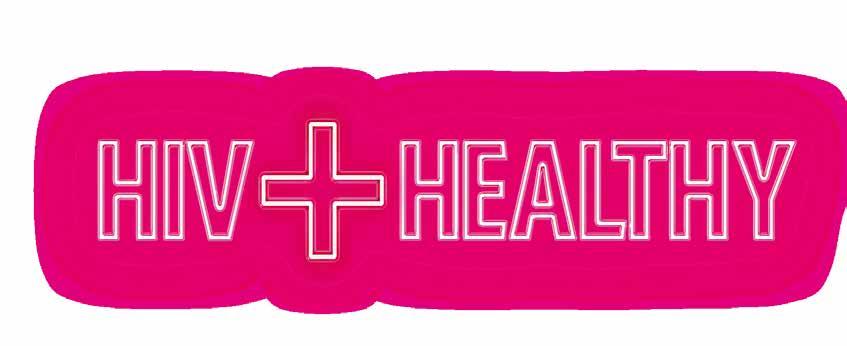
12 minute read
FEATURE: SORE THROAT MANAGEMENT
Acute Sore throat Management in Pharmacy

Written by Conor Prendergast, Emergency Medicine Physician, Trinity College Dublin
Patients with an acute sore throat are a common presentation to Emergency Departments in Ireland. A recent single centred respective study based in an Emergency Department (ED) in Dublin, found there was over 650 attendances annually, accounting for just below 2% of annual attendances to the department.1 Consequently this cohort of patients accounts for a significant proportion of the workload upon emergency services, and the provision of appropriate emergency care to them is vital. These patients are usually diagnosed as either tonsillitis or pharyngitis. These diagnoses account for the vast majority of presentations. Both illnesses tend to be viral in origin, with Group A Beta Haemolytic streptococcus representing the most serious bacterial cause. Severe but rare diagnoses such as epiglottitis, retropharyngeal abscess and peritonsillar abscess/quinsy should be also considered. Clinical signs that can help differentiate benign causes from severe causes include significant systemic upset, stridor, the inability to swallow salvia, severe neck stiffness and the patient holding a tripod position. The majority of simple tonsillitis and pharyngitis treatment can be carried out at a GP level or by over the counter medications such as paracetamol and NSAIDs. In the case of uncomplicated tonsillitis/pharyngitis, a pragmatic expectant policy is recommended. Patients who attend the ED are advised to avoid antibiotics and return to their GP if symptoms persist for a few days.2 There is an over tendency to prescribe antibiotics with one UK study finding that 64% of primary care patients are prescribed antibiotics for a sore throat.3 This is despite most evidence displaying that the majority of sore throats are secondary to a viral infection. 85% to 95% of throat infections in adults and children under the age of 5 are caused by viruses. While viruses account for 70% of throat infections in those aged 5 to 15 years.4 This over prescribing of antibiotics has numerous potential consequences including unnecessary exposure to antibiotic side effects and antibiotic resistance. Certain studies have in fact shown that treatment of sore throats with antibiotics only provides mild symptomatic relief, though they do reduce complications such as rheumatic fever. However they have no effect on incidence, in countries such as Ireland, where this disease is not common.5
To help differentiate between viral and bacterial causes there is a number of decision aid tools. Two of these are recommended by NICE, which are the FeverPAIN and CENTOR.6 FeverPAIN scores from zero to five with each of the following scoring one point: Fever over 38°C.
Purulence (pharyngeal/tonsillar exudate) Attend rapidly (3 days or less) Severely Inflamed tonsils No cough or coryza A score of 0-1 has a 13-18% chance of isolating streptococcus.6 The CENTOR scores zero to four with each of the following scoring one point: Tonsillar exudate
Tender anterior cervical lymphadenopathy or lymphadenitis History of fever (over 38°C) Absence of cough A score of less than or equal to 1 only has a 7% of being caused by streptococcus.6 Both tools help reduce the prescription of unnecessary antibiotics by giving the clinician confidence that with a low score, the likelihood of a streptococcus infection is low. The antibiotic of choice for when one is required is Phenoxymethylpenicillin four times a day for ten days. If the patient is allergic to penicillin the second line option is clarithromycin.7 Antibiotics such as amoxicillin carry the risk of causing maculopapular exanthems in patients diagnosed with infectious mononucleosis and therefore should be avoided in patients presenting with sore throats.7 Other treatments that can be considered include paracetamol and NSAIDs. These medications can also be given rectally, which may be of benefit in patients with odynophagia. Topical mouthwashes or sprays, for example Benzydramine, may also provide symptomatic relief. When patients attend the ED, a commonly used treatment is Dexamethasone to treat severe odynophagia or stridor by reducing soft tissue swelling. One diagnosis to always consider, especially in younger patients presenting with a sore throat is infectious mononucleosis. This can be tested by a Monospot being sent. Rostegaard et al in 2019 found that the cumulative risk of infectious mononucleosis prior to turning 30 years old was 13.3% for males and 22.4% for females.8 Consequently it is a very prevalent infection and carries with it, other side effects that need to be acknowledged. One such effect is splenomegaly which is of particular importance in sport playing children and young adults. Splenomegaly occurs as a consequence of lymphocytic infiltration enlarging the spleen below the level of the ribcage, leaving it susceptible to be

ruptured.9 Patients with confirmed infectious mononucleosis should be advised to rest from contact sports and heavy lifting for at least one month, and return to the E if they develop sudden onset abdominal pain.10 Another complication of bacterial tonsillitis to consider is a peritonsillar abscess or quinsy. This is a unilateral swelling of pus behind the tonsil, where the swelling typically crosses the midline of the mouth. Patient symptoms may include a “hot potato voice” and trismus.11 These patients need to be treated by an ENT surgeon and may need either needle aspiration or incision and drainage.12
Finally, epiglottis thankfully is now a less rare complications since the introduction of the Haemophilus influenzae b vaccine. However this a life threatening emergency and should be considered if the following clinical symptoms are present: stridor, muffled voice, rapid clinical course and a history of diabetes.13 These patients will need urgent review by ENT and anaesthetics, and may benefit from treatments such as dexamethasone and adrenaline nebulisers.
To conclude, sore throats are a common presentation to the ED. The majority of these presentations are viral in origin and require symptomatic treatment and do not benefit from antibiotic treatment. Through the use of decision aid tools such as the FeverPAIN and CENTOR a clinician can isolate sore throat presentations that are more likely bacterial in origin. Certain diagnoses such as infectious mononucleosis, epiglottis and peritonsillar abscess need to be carefully considered in this cohort.
References available on request
News
Patient Safety Academy Conference
Listening down, speaking up and whistleblowing in healthcare were among the key issues addressed at the second annual MSc in Human Factors in Patient Safety Academy, hosted by RCSI in September.
The conference, organised by RCSI in collaboration with the Human Factors in Patient Safety Alumni Academy, brought together an inter-professional community of patient safety advocates discuss culture in healthcare. It was chaired by Dr Dara O’Keeffe, Simulation Lead in Postgraduate Surgical Education at RCSI. Professor Eva Doherty, Director of Human Factors in Patient Safety at RCSI, said: “The theme for the event was the importance of ‘listening down’ or psychological safety in promoting a just and safe culture in healthcare.” The conference heard from Martin Bromiley OBE, Founder Clinical Human Factors Group, UK. He said that “to see so many health professionals engaged in the science of safety and human factors was both inspiring and heartening.” “We all make mistakes, but we can reduce the danger and mitigate against those threats and errors by developing/supporting systems that make it easy to get it right and hard to get it wrong. It is important to encourage and train people to speak up, but it’s more important to encourage those in leadership positions to listen to their team, to seek ideas before stating a preference, and to thank those who do speak up. For leaders asking open questions and demonstrating understanding is a key to optimising solutions. “To move forward in safety, we all need to build relationships below, across and above us. The quality of those relationships helps bring people together for a coming purpose of making healthcare safer for everyone.”
Safeguarding
Mr Peter Duffy, Consultant Urologist in the UK provided attendees with an insight into the challenges and outcomes involved with his own whistleblowing case in healthcare. Mr Duffy, said: “I’m really grateful to the Royal College of Surgeons in Ireland for their invitation to the Human Factors in Patient Safety conference. “I’ll continue to do what I can to promote candour and safeguarding in healthcare, whilst providing audiences with the “reality checks” that are necessary in order to be able to speak out safely without compromising their own employment or future prospects.” The keynotes were followed by a discussion session regarding the Irish context. A number of points were raised in the discussion including the recognition that there is a lot of improvement still required and the concern that there is a mistaken belief that a just, open culture currently exists in Ireland.
Developing patient care
The Human Factors in Patient Safety Academy was established in 2021 and consists of Alumni and current scholars of the RCSI Postgraduate Diploma/MSc in Human Factors in Patient Safety. The Academy supports graduates to enable the development of safer patient care through human factors knowledge and skills. Led by Professor Oscar Traynor and Dr Eva Doherty, RCSI established a mandatory human factors curriculum to improve the communication and interpersonal skills of surgical trainees and developed a robust process for competence assessment and performance appraisal. RCSI is now internationally recognised as a leading centre for human factors and patient safety in healthcare.
Dr Dara O’Keeffe, Simulation Lead in Postgraduate Surgical Education, RCSI Surgical Affairs (centre) with keynotes Martin Bromiley OBE, Founder Clinical Human Factors Group, UK and Mr Peter Duffy, Consultant Urologist, UK


Mr Peter Duffy, Consultant Urologist, UK Martin Bromiley, OBE, Founder Clinical Human Factors Group and Martin Bromiley OBE, Founder Clinical Human Factors Group
THE FASTEST GROWING ORAL REGIMEN FOR PLHIV1*

Virological suppression is the first step to achieving

For your patients living with HIV, make DOVATO a part of their healthy future.

DURABLE AND ROBUST2,3 DOVATO
PART OF HEALTHY LIVING WITH HIV WITHOUT TDF, TAF AND ABC
DOVATO is indicated for the treatment of HIV-1 in adults and adolescents above 12 years weighing at least 40 kg, with no known or suspected resistance to the integrase inhibitor class, or lamivudine.
Abridged Prescribing Information
Dovato (dolutegravir 50mg/lamivudine 300mg) tablets
See Summary of Product Characteristics (SmPC) before prescribing. Presentation: Film-coated tablet containing dolutegravir sodium equivalent to 50 mg dolutegravir and 300 mg lamivudine debossed with “SV-137” on one face. Indication: HIV-1 in adults & adolescents above 12 years of age weighing >40kg, with no known or suspected resistance to the integrase inhibitor class, or lamivudine. Dosing: One tablet once daily with or without food. Use an additional 50mg tablet of dolutegravir approximately 12 hours after the dose of Dovato when co-administered with efavirenz, nevirapine, tipranavir/ritonavir, etravirine (without boosted PI), carbamazepine, oxcarbazepine, phenytoin, phenobarbital, St John’s Wort or rifampicin. Elderly: Limited data in 65+ yrs. Renal impairment: Not recommended in patients with creatinine clearance < 30 mL/min. For patients with a sustained creatinine clearance between 30 and 49 mL/min see SmPC section 4.4. Hepatic impairment: Caution in severe hepatic impairment (Child-Pugh grade C). Contraindications: Hypersensitivity to any ingredient. Co-administration with substrates of OCT-2 with narrow therapeutic windows, such as fampridine. Special warnings/precautions: Risk of hypersensitivity reactions. Discontinue dolutegravir and other suspect agents immediately. Risks of osteonecrosis, immune reactivation syndrome. Monitor LFTs in Hepatitis B/C co-infection and ensure effective Hepatitis B therapy. Caution with metformin: monitor renal function and consider metformin dose adjustment. Use with etravirine requires boosted PI or increased dose of dolutegravir. Use with Mg/Al-containing antacids requires dosage separation. Use with calcium, multivitamins or iron also requires dosage separation if not taken at the same time with food. Use with cladribine or emtricitabine not recommended. When possible, avoid chronic co-administration of sorbitol or other osmotic acting alcohols (see SmPC section 4.5). If unavoidable, consider more frequent viral load monitoring. Fertility, pregnancy and lactation: Human fertility - no data; animal fertility - studies indicate no effects. Women of childbearing potential (WOCBP) should be counselled about the potential risk of neural tube defects including consideration of effective contraceptive measures. If a woman plans pregnancy, the benefits and the risks of continuing treatment should be discussed with the patient. The safety and efficacy of a duel regime has not been studied in pregnancy. If a pregnancy is confirmed in the first trimester while on Dovato, the benefits and risks of continuing Dovato versus switching to another antiretroviral regimen should be discussed with the patient taking the gestational age and the critical time period of neural tube defect development into account (see SmPC section 4.6). There have been reports of mitochondrial dysfunction in HIV-negative infants exposed in utero and/or post-natally to nucleoside analogues. Do not breast-feed. Side effects: See SmPC for full details. Headache, GI disturbance, insomnia, abnormal dreams, depression, anxiety, dizziness, somnolence, rash, pruritus, alopecia, fatigue, arthralgia, myalgia, hypersensitivity, completed suicide, suicidal ideation or suicide attempt, panic attack, hepatitis, blood dyscrasias, acute hepatic failure, pancreatitis, angioedema, rhabdomyolysis, lactic acidosis, peripheral neuropathy. Elevations of bilirubin, ALT, AST and CPK. MA Nr: EU/1/19/1370/001. MA holder: ViiV Healthcare BV, Van Asch van Wijckstraat 55H, 3811 LP Amersfoort, Netherlands. Legal Category: POM A. Date of preparation of API: February 2022. Code: PI-6305. Further information available from GlaxoSmithKline, 12 Riverwalk, Citywest, Business Campus, Dublin 24. Tel: 01-4955000.
Adverse events should be reported directly to the Health Products Regulatory Authority (HPRA) on their website: www.hpra.ie. Adverse events should also be reported to GlaxoSmithKline on 1800 244 255.
*From November 2020 through October 2021, over 39 markets and territories with data sources available. References: 1. Data on file. Regimen market share growth November 2020-October 2021. REF-146400. ViiV Healthcare group of companies. Research Triangle Park, NC. 2. Cahn P, Sierra Madero J, Arribas JR, et al. Three-year durable efficacy of dolutegravir plus lamivudine in antiretroviral treatment-naïve adults with HIV-1 infection. AIDS. 2022;36(1): 39-48. doi:10.1097/QAD.0000000000003070 3. Osiyemi O, De Wit S, Ajana F, et al. Efficacy and safety of switching to dolutegravir/lamivudine (DTG/3TC) versus continuing a tenofovir alafenamide-based 3- or 4-drug regimen for maintenance of virologic suppression in adults living with HIV-1: results through week 144 from the phase 3, non-inferiority TANGO randomized trial. Clin Infect Dis. 2022;ciac036 and suppl 1-18. doi:10.1093/cid/ciac036







